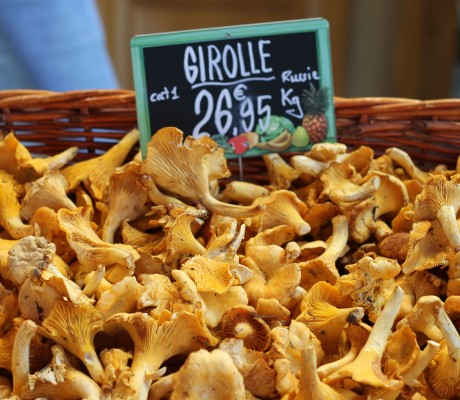
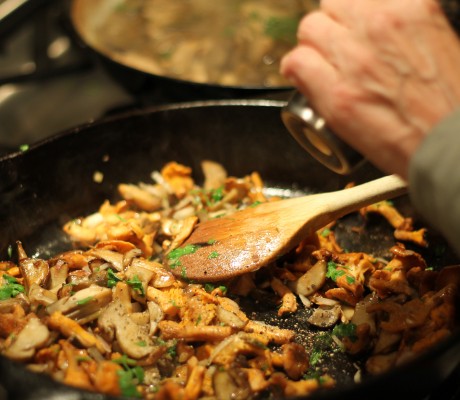
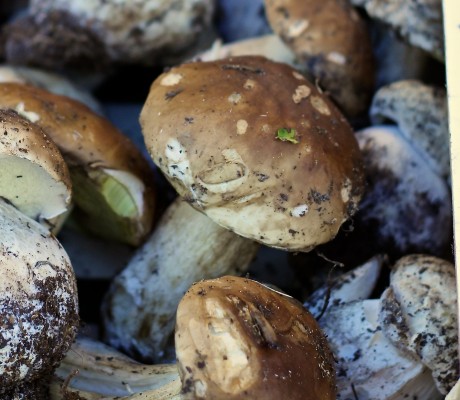
Autumn is mushroom season in France. In the short time that the mushrooms are out, mushroom enthusiasts (mildly obsessed people like myself) comb the woodlands, baskets in hand, on a fungi treasure hunt. These fungi foragers may be found in the hilly regions of Provence, the foothills of the Alps, and even in the parks of Versailles and the small bucolic forests that surround Paris. There are a number of rules for mushroom hunting: where you hunt and when, the size, the tools you can use (knives only) and how they must be cut in order not to damage the stipe (the stem). My personal favorite is that foraged mushrooms must be carried in a wicker basket (no plastic bags or buckets) so the spores can fall out and help propagation. Practical forest chic!
When mushrooms are in season you will find them on most restaurant menus – as an appetizer (en persillade – sautéed in olive oil with garlic and parsley), in an omelette or a soufflé or as an earthy accompaniment to white meats, game, or even fish. Most of my mushroom hunting takes place in the Paris markets; the urban foraging is not as varied as the woodland hunt, but it still can be fruitful and abundant. The most common varieties are:
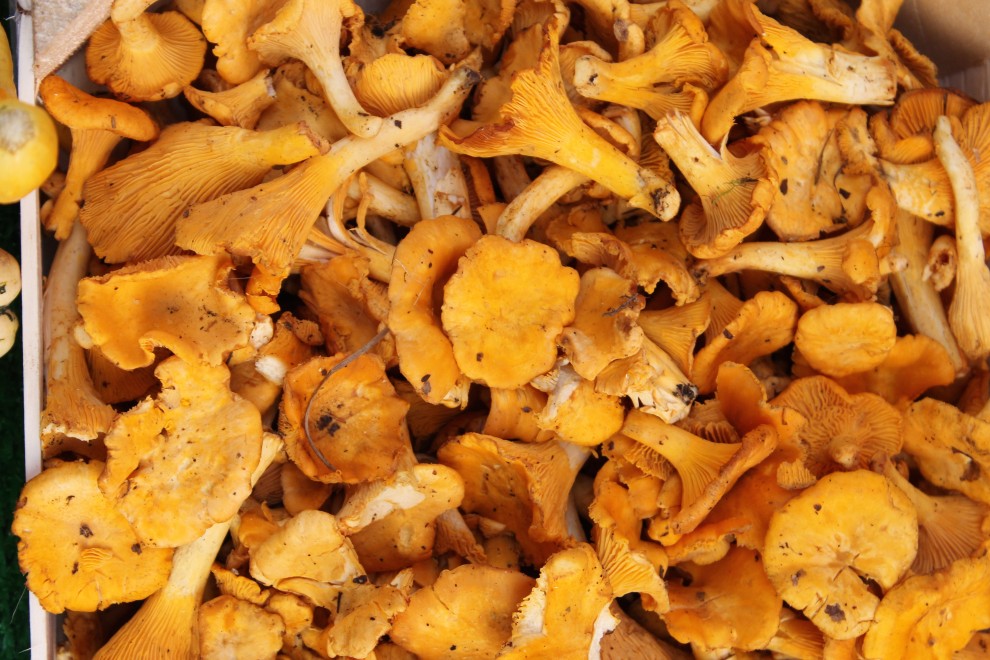
Girolles -widely known as golden chanterelles outside of Europe, these mushrooms are yellow-orange in color, have a smooth, tender flesh and a nutty, fruity taste. The smaller mushrooms are usually firmer and have a richer flavor. These mushrooms always seem to have a bit of the forest floor stuck to them as well as grit. Some can get by with just a wipe from a damp cloth, others need a good rinse. It’s okay, go ahead, remember they have just come from the woods where they grew for two or three weeks under the rain. Ideally, girolles should be washed several hours or the day before you want to use them. Rinse under cold running water, don’t dunk them in the sink, wiping them clean with a towel, then place in a colander to drip. When all the mushrooms are grit free, spread them out on a paper towel, preferably in the sun and let them air dry. If you are in a rush, line a salad spinner with a dry towel and spin dry. Girolles pair well with egg dishes, chicken or veal. They are delicious sautéed or stirred into a risotto.
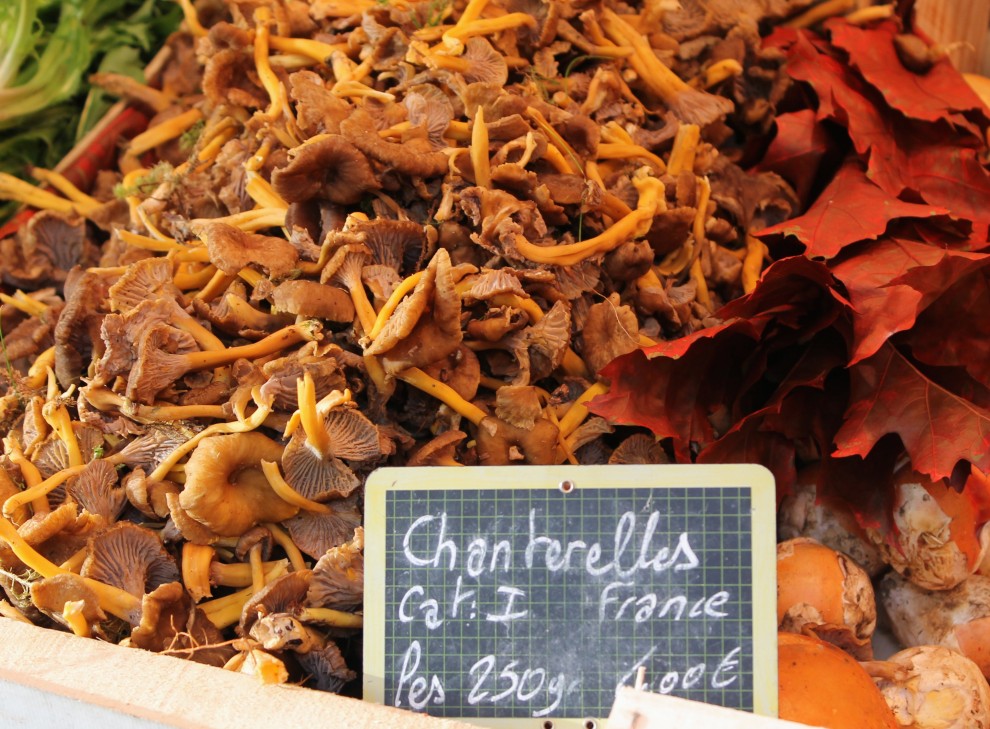
Chanterelles grises – as they are commonly called in France, these are long, willowy, bi-colored mushrooms with light brown caps and and hollow brown-yellow stems. These mushrooms love humidity and are in abundance after a lot of rain. Remove the tough end of their stems, quickly swish in water if needed and place on a towel to dry. They can also go in a towel lined salad spinner to speed up the process.
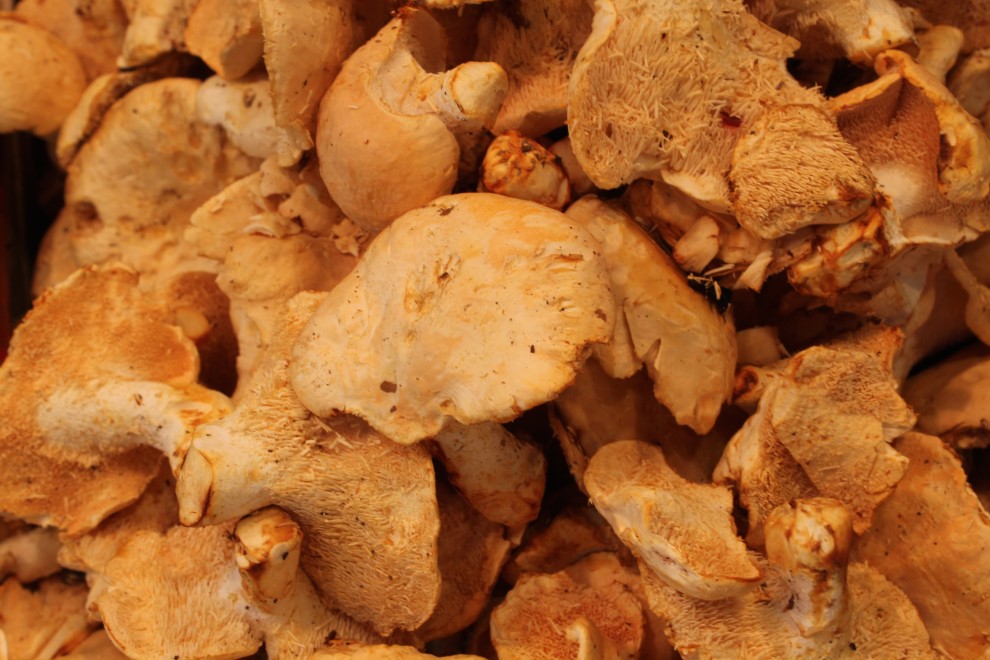
Pied de Mouton
Pieds-de-Mouton, Hedgehogs, are ivory colored with lots of feathery teeth under their caps – if you don’t like the teeth – some people object to how they look floating around in their food – they are easily wiped off. They mix well with other mushrooms or are delicous all on their own. Rub them clean with a damp cloth or give them a quick rinse under running water then dry on paper towel. They can be quite brittle so handle them gently or they will break into lots of little pieces.
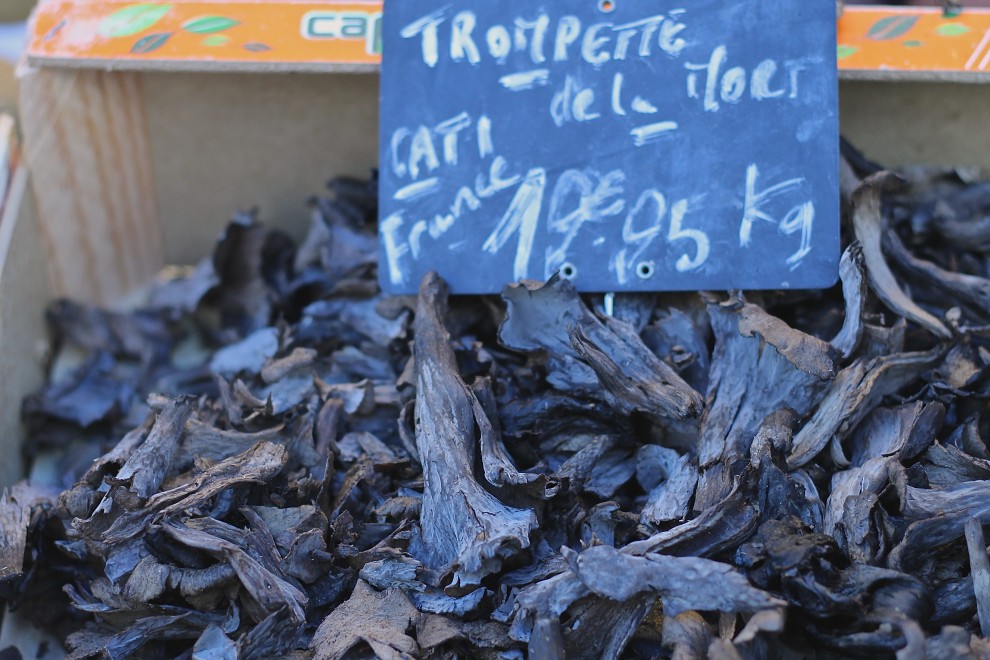
Trompette de la Mort
Trompettes-de-la-Mort – In spite of their odd look, Horn of Plenty mushrooms are quite delicious, enough so to merit the nickname ‘poor man’s truffle’. Their horn like shape can hold a lot of dirt and the easiest way to clean them is to pull them apart and rinse under cold running water. If they are really dirty, fill a bowl with water and give them a dunk. Quickly swirl them around, then scoop them out of the water leaving the grit, leaves and pine needles behind. They can dry on a dish towel, or line a salad spinner with a paper towel and give them a spin dry.
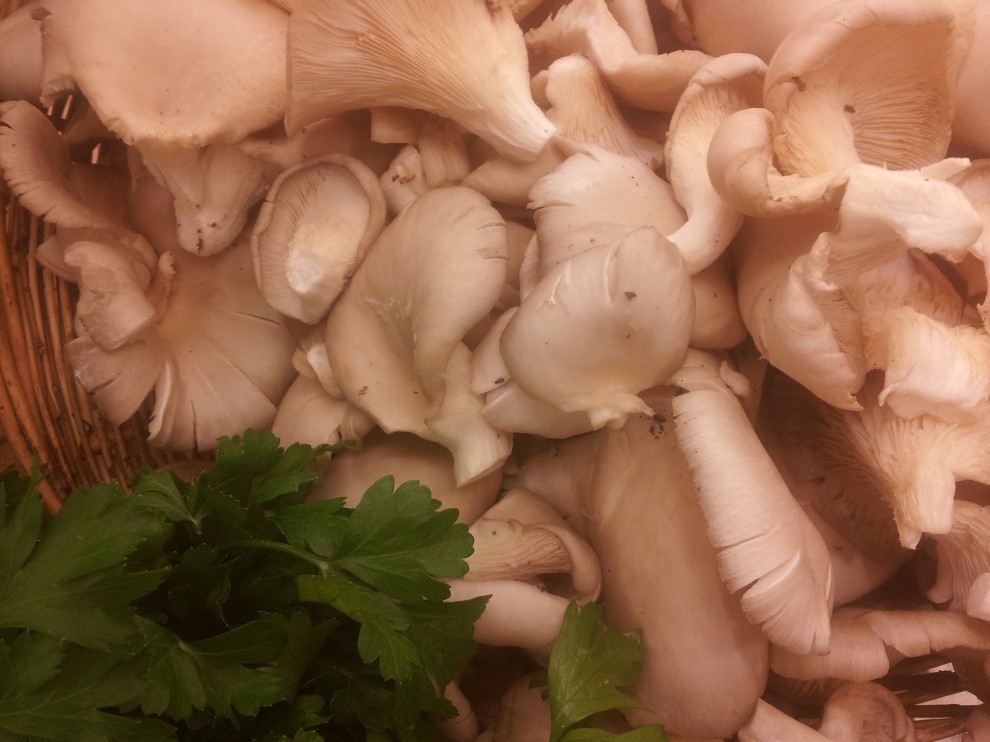
Pleurotes – Most of the oyster mushrooms you find in the market will be cultivated and not very inspiring. If you can get your hands on some found in the wild, you are in for a real treat. As with other mushrooms the smaller the better. Large oyster mushrooms tend to be tough.
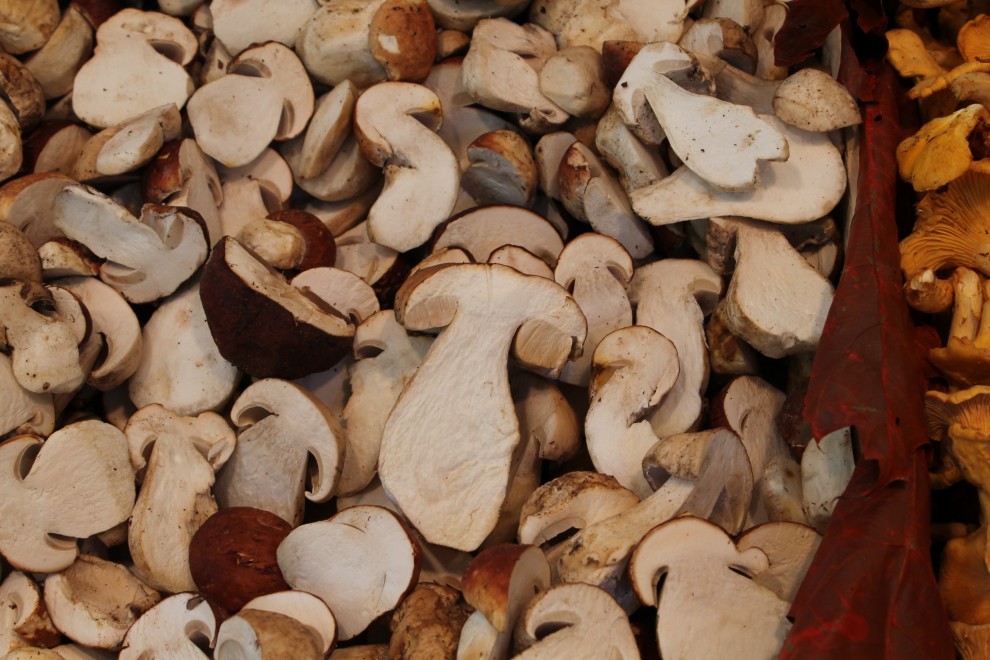
Cèpes
Cèpes – Porcini in Italy, Bolet in the US – this is probably the best known and revered of all the wild mushrooms. They have smooth, creamy flesh, a savory flavor and an almost cartoon-like shape. The only downside to cèpes is that insects love them too. Often they are sold cut vertically in two (as pictured above) to show that they are insect free. The best ones are the small, young, firm button cèpes – they can be shaved over salads and risottos – more mature mushrooms have larger spores, are yellow to greenish in color and have a well-developed cap and can be chopped and sautéed with garlic and butter, roasted, thrown into a stew…almost anything goes…let your imagination run wild! Prepare these mushrooms by cutting off the bottom of the dirty stem, and if bought whole, check for worm holes. Peel the woody base with a knife or vegetable peeler and then wipe clean with a wet paper towel.